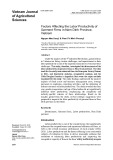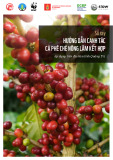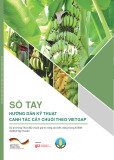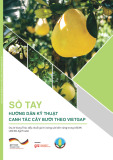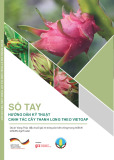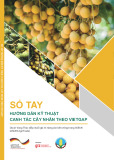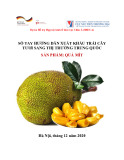
Int.J.Curr.Microbiol.App.Sci (2020) 9(11): 1667-1673
1667
Review Article https://doi.org/10.20546/ijcmas.2020.911.198
Industrial Gardening-A Review
Snehasis Dalal, Balusu Dhanunjaya, Vishwjeet, Reshma Chongtham,
Parul Sharma and Homraj Sahare*
School of Agriculture, Lovely Professional University, Jalandhar-Delhi G. T. Road,
Phagwara, (Punjab), India
*Corresponding author
A B S T R A C T
Introduction
Beautification of factories and industrial
townships to form a much better surrounding
for living operating, recreation, and
circulation square measure the objectives of
landscape planners. Garden construction and
style was the start of what was called
―landscape architecture‖. The world‘s oldest
gardening is forest gardening [4].It was begun
in West Asia and unfold westward into what's
Europe these days. The word, ―garden‖ came
from the English word, ―geard‖, which meant
―enclosure‖. Education may be a powerful
resolution to today‘s issues, and gardens may
simply be the solution. People have become
more educated in terms of computer and
technology specifically, that square measure
permitting them to own additional free time
throughout this pandemic. In Hyderabad a
densely inhabited industrial areas are
departure residents susceptible to pollutants.
As a significant a part of town was engulfed
in air pollution and a chemical-like smell for
the previous couple of years, urban designing
consultants urged a rethink on the placement
of industries.
―Areas that were earlier deserted around
industrial areas together with Miyapur,
Nacharamar currently residential hubs. In the
70s, paddy was still being fully grown there,
International Journal of Current Microbiology and Applied Sciences
ISSN: 2319-7706 Volume 9 Number 11 (2020)
Journal homepage: http://www.ijcmas.com
Industrial garden is a new approach, especially for competition in
increasing pollution in the atmosphere. It helps easily to beautify the
industrial areas. The lawn laid in vacant lands not only adds beauty but also
cut down dust. These gardens are designed to reduce pollution and beautify
the world. These units are the most sources of air, water, noise and soil
pollution. Another important aim is to provide ample amount of shade and
coolness so that the workers get a sigh of relief under the trees from the
hostile hot interior of the industry as trees can brings down the temperature
around the industry considerably.
K e y w o r d s
Ample, Dust,
Hostile, Shade,
Vacant
Accepted:
12 October 2020
Available Online:
10 November 2020
Article Info

Int.J.Curr.Microbiol.App.Sci (2020) 9(11): 1667-1673
1668
however with the agitated development, the
density of town has undergone a huge
amendment,‖ Former human of the Indian
Institute of Chemical Technology (IICT)
same there's a desire for caution as usually
industrial areas should have a buffer zone to
guard the common person WHO might not
remember of the impact of emissions and
doable leaks from industries – significantly
chemical industries placed within the town
and its surroundings.
As a result, the world‘s population has
additional time off. Why not get into native
inexperienced areas and gardens? Why not
manufacture additional gardens of each kind
and visit those that square measure already
created close whereas maintaining social
distancing.
History
In 27 BC, a Roman author and engineer by
the name of Vitruvius wrote a book known as,
―Ten Books on Architecture‖. He talked about
concerning style, landscape, engineering the
surroundings, water, and also the importance
of personal gardens. He introduced concepts
like beauty, convenience, and utility.
Throughout history, agriculture has been in
constant development.
The traditional decorative garden evolved into
the medieval vegetable plot established within
the former marsh areas of Paris. Within the
nineteenth century, scientific innovations
improved techniques and tools that paved the
method for industrial agriculture.
The industrial revolution of 19th century,
marked a turning purpose for industrial
agriculture. Mechanization extended to each
agricultural tools and growing techniques. In
chemistry, the invention of the importance of
phosphoric and chemical elements for the
expansion of plants light-emitting diode to the
assembly of artificial fertilizers and therefore
improved intensive farming. The invention of
the external-combustion engine, followed by
that of the combustion engine results in the
event of transport networks that ‗reduced‘ the
gap between urban and agricultural areas.
Crops stirred removed from the cities and into
rural areas with additional appropriate
growing conditions. Personal allotment
gardens developed inside cities and provided
recent fruit and vegetables for subsistence
functions (Table 1).
Scope
For a landscape designer, there is ample scope
to implement its aesthetic concepts in such
units.
Different square measures are to be improved
by providing streets, sidewalks, sewers and
sanitation, installation of public utilities like
water, electricity, gas and different
conveniences.
Between the industrial plant and district,
inexperienced belts may even be created by
planting trees.
To maintain ecological imbalance
Industrial gardening
The goal is to spot different markets that are
currently either underserved with creativity
about growing plants or perhaps are unaware
that there are different solutions to solving
today‘s emerging challenges in controlled
environment agriculture.
Gardening in and around factories are needed
to fight pollution besides beautification. Open
spaces around the buildings can be utilised for
plantations and gardening to minimise the
ecological imbalance. It also works as
therapeutic. It‘s the best way to relieve stress.
Having your own green space and sitting

Int.J.Curr.Microbiol.App.Sci (2020) 9(11): 1667-1673
1669
amongst fragrant plants can boost your mood!
Sipping a cup of your favourite beverage and
sitting in your area filled with plants will ease
your mind and calm your nerves. Plants are
therapeutic and are scientifically proven to
alleviate anxiety and stress.
Explore new and better ways to regulate every
aspect of growing and gardening—moisture,
temperature, airflow, different atmosphere
needs, and lots of other factors that will
impact total production.
Planting is completed within the industrial
gardens to reduce the amount of dust and
chops down the noise. They reduce the
amount of carbon dioxide in the air, and
increase oxygen and they help eliminate
toxins from smoke that emits from
industries[8].
A large number of such trees are planted,
either in groups, clumps or in multiple rows
which can enhance beauty, provide shade and
regulate the environment for peaceful
conversations. A device that took my
attention was The ‗Phyto-sensor‘ toolkit,
developed by the Citizen Sense research
group that is led by Goldsmiths sociologist.
This device provides timely recommendation
for vegetation to mitigate and monitor waste
levels. This is often a citizen‘s toolkit for
planting air quality gardens. The toolkit
includes directions for distinctive the most
effective locations for air quality gardens, also
as totally different planting ways and
maintenance techniques[1].
Buffer zone
Experts say industrial areas must have
buffer zone
A buffer zone is an area that was created in
the pollution affected area, mainly air and
noise pollution. It is an area of green network
that covers parking lots, vehicle access,
pedestrian walkways and areas for tree
planting, landscaping and biome. There are
varied styles of buffer zone like recreational
parks and barrier walls.
A buffer zone ought to be supplied with a
distance of thirty meters to crop band special
and serious business, twenty meters to ten
meters medium business to light-weight
business[6].
Case studies
1. 'The factory in a Garden' that traces the
history of the commercial gardens
movement from its late-eighteenth-
century beginnings in Great Britain to its
ordinal century equivalent in Google's
vegetable gardens at their headquarters in
CA. The book was the 1st study of its
kind examining the event of parks,
gardens, and outside leisure facilities for
industries in Great Britain and America as
a model for the reshaping of the company
setting within the ordinal century. This
was additionally the primary book to
relinquish a comprehensive account of the
contribution of gardens, agriculture, and
recreation to the history of accountable
market economy and moral operating
practices[7].
2. A journal by Richard Thompson in June
2018 cited that health professionals ought
to encourage the public to create use of
the unutilised area and may pressure
native authorities to extend open areas
and therefore plant variety of trees, so
additionally serving to counteract
pollution and global climate change[2].
3. A study in April 2014 reviews the benefits
of farming and community food growing
for every physical condition. Benefits of
business farming for condition and well-
being includes gardens, still as a result of

Int.J.Curr.Microbiol.App.Sci (2020) 9(11): 1667-1673
1670
the activity of farming, shown to possess
a positive impact on peoples‘ health and
well-being, the results of every physical
activity and so the utilization of the
garden as a mental relaxation and
stimulation. Gardeners appear to recollect
that farming is good for his or her mental
health. An interview of 144gardeners,
found that recreation (21%) was the
foremost necessary reason followed by
health edges in addition to mental health
(19%), physical health and exercise (17%)
and produce quality and nutrition (14%).
Besides the activity of farming, viewing
the inexperienced house and being in an
inexperienced house has collectively been
shown to possess positive effects on
condition and stress[3].
4. Another study by J. Community Health in
August 2012 primarily delineates the
impact of a community farming project on
vegetable intake, food security, and
family relationships. Thirty-eight families
listed within the study throughout the pre-
garden fundamental measure, and 125
families added to the list later for the
study of post-garden. Of the families
listed throughout the pre-gardening
fundamental measure, there have been
163 house members.
5. The mean age of the answerer was 44,
starting from 21 to 78 years getting on.
This study was vital as a result of it
succeeded in enrolling and following
thirty eight underserved families UN
agency actively participated within the
organic community farming project over 2
growing seasons. Their findings indicate
that the community farming project
controls several health edges yet as
ornamental purposes. Additionally,
several families expressed satisfaction
with knowing the vegetables they grew in
their gardens were chemical-free, the
method of getting a garden carried on
traditions they learned from the family in
Mexico, and therefore the economic edges
of not having to pay cash on food. In
conclusion, they learned from this study
that a community farming program will
cut back food insecurity, improve
vegetable intake, and strengthen family
relationships with some aesthetic garden
styles[9].
6. Thomas Pugh explained that
concentrations of nitrogen dioxide (NO2)
and microscopic particulate matter (PM)
— both of which can be harmful to
human health exceeds safe levels on the
streets of many cities. Past analysis advice
that trees and other green plants can
improve urban air quality by removing
those pollutants from the air.
7. However, the improvement seemed to be
as small as less than 5 percent. The new
study provide a better understanding of
the effects of green plants in stagnant air
of city streets, which the authors term
"urban street canyons." The study
concluded that judicious placement of
grass, ivy and other plants in urban
canyons can reduce the concentration at
street level of NO2 by as much as 40%
and PM by 60%, much more than
previously believed. T
8. he authors even suggested that building
plant-covered "green billboards" in these
urban canyons to increase the amount of
foliage. Trees were also shown to be
effective, but only if care is taken to avoid
trapping pollutants beneath their
crowns[5].

Int.J.Curr.Microbiol.App.Sci (2020) 9(11): 1667-1673
1671
Table.1
Trees recommended for Industrial Gardening
Scientific Name
Common Name
Corymbiacitriodora
Lemon-scented gum
Ficusreligiosa
Pipal
Ficusbenjamina
Weeping fig
Ficusreligiosa
Sacred fig
Cynarascolymus
Artichokes
Bougainvillea spp
Bougainvillea
Betulapendula
European birch
Ginkgobiloba
Ginkgo
Koelreuteriapaniculata
Golden raintree
Tiliacordata
Littleleaf linden
Acer spp
Maple
Quercusrubra
Red oak
Pyrus spp
Pear
Magnoliagrandiflora
Southern magnolia
Liriodendrontulipifera
Tulip tree
Edible plants recommended for Industrial Gardening
Apple
Persimmon
Pear
Huckleberries
Citrus
Strawberry
Plum
Kiwi
Figs
Grape
Loquats
Guava
Peach
Blueberry
Fig.1
Asthma is the leading health problem faced by most of the Indians. It accounts for more than 50% health problems
caused by air pollution



![Tài liệu kỹ thuật tái canh cây cà phê [chuẩn nhất]](https://cdn.tailieu.vn/images/document/thumbnail/2025/20250909/kimphuong1001/135x160/5411757389201.jpg)






